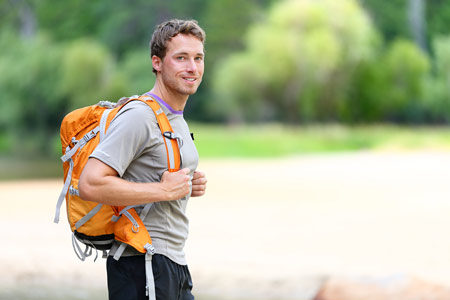Packing can easily become a headache and a real chore for many of us, especially women. As a result, we often end up carrying more than we need, and find ourselves with excess baggage when we check in at the airport.

The organization of your suitcase will depend above all on your destination and the type of trip you’re planning. That’s why you need to prepare what you’ll really need, and adapt the clothes you bring to the countries you’ll be visiting and the activities you’ll be taking part in during your trip. Here’s an article to help you prepare your luggage and travel with peace of mind.
Pack only the essentials!
Although it may seem logical, we always tend to pack more than we should. But whether you’re planning for 2 weeks, 2 months or 2 years, the amount of clothes you need doesn’t really vary. When choosing your equipment, only go for what you really need! It’s best to travel light, choosing quality over quantity. The most important thing is to adapt your bag to your intended destination (climate) and activities, so as to take only the clothes and equipment you need. In fact, you’ll need different clothes depending on whether you’re planning a farniente holiday or weeks of trekking!
The bare minimum
When you leave on a trip, the minimum you need to take with you is your passport, your credit card and yourtravel insurance certificate. As for the rest, we generally find more or less the same things as in France: clothes, accessories, medicines, food… Some Asian countries, such as Indonesia, Thailand and the Philippines, have the biggest shopping malls, so if you’ve forgotten something or have a particular need, you’ll certainly be able to find it at your destination.
The essentials
Clothing
Nevertheless, there are still a few essentials to take with you on your trip. Here’s a list of clothes to pack, to be adapted to your needs and desires!
– T-shirt
– Shirt
– Trousers
– Shorts
– Briefs
– Swimsuit
– Pair of socks
– Poncho/K-way
– 1 pair of glasses
– 1 pair of walking shoes/basket
It is not necessary to have multiple quantities of jeans, It may come as a surprise, but it is possible to wash your clothes while traveling. In fact, many countries have stores where you can have your clothes washed, often at a lower cost.
Tip There’s a clothing material that’s particularly well-suited to travel, combining the advantages of traditional wool and synthetic fibers. Merino wool is soft, breathable, odorless, non-itchy and warm!
Toiletries
For personal hygiene, there is also a minimum list of essentials to take with you.
– Toothbrush, toothpaste
– Soap
– Disposable razor
– Shampoo, comb, cotton buds
– Towel
Electrical and electronic appliances
Electronic devices (cameras, laptops, tablets, MP3 players, etc.) generally have a built-in power adapter. Those without are generally designed to be used anywhere in the world with a simple power adapter purchased separately.
How many kilos?
It all depends on the type of trip you’re planning. Luggage that is too heavy or too bulky may be refused by airlines, or may be subject to substantial surcharges, particularly with low-cost airlines, which charge extra for hold luggage.
It is generally advisable to have less than 20 kilos of luggage on a plane. Ideally, you should take a bag weighing no more than 15 kilos, which will allow you to travel light and still have a varied wardrobe.
In fact, the fewer kilos you carry, the easier your trip will be:
- Less weight when moving
- Less thinking about what to wear each day
- Less chance of being robbed
- Greater sense of freedom
In conclusion, you need to prepare your bag according to your destination and activities. Although it may seem old-fashioned to some, it’s a good idea to draw up a list of essentials beforehand, to limit the risk of taking things you don’t need.
